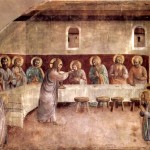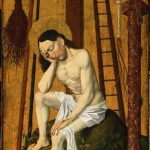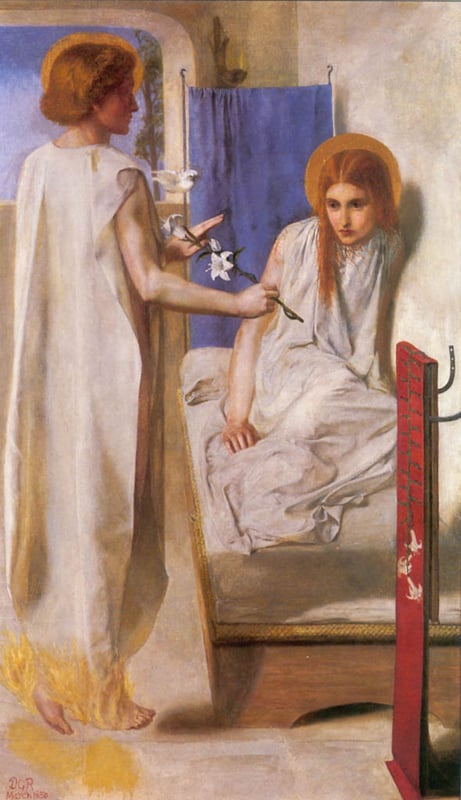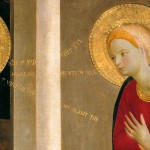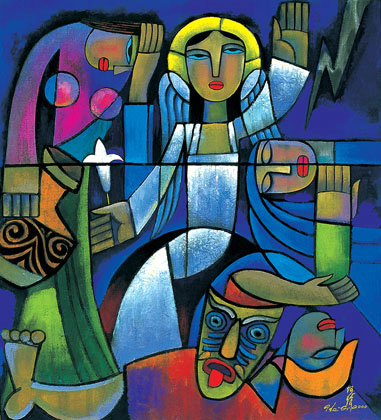 The Last Days of Jesus, a two-part series PBS is showing now, tells a new and detailed account of the shifting politics between Rome and Israel in Jesus’ time.
The Last Days of Jesus, a two-part series PBS is showing now, tells a new and detailed account of the shifting politics between Rome and Israel in Jesus’ time.
Scholars from Britain, the US, Canada, and Israel, tell this story from the historical views of two faiths, Christianity and Judaism.
And they are in agreement that there is a lot to be known that we haven’t known till now.
A network of ambitions and intrigue unite the Prefects (in Israel, Pilate) the would-be king Herod who has married a legitimate Jewish noblewoman but has violated his own former marriage and hers in so doing, and Jesus and John, whose devotion is to the kingdom and renewal of the Temple.
The scholars are persuasive in their conviction that Jesus was both well-known and financially well supported, even by people high in Herod’s court. Why would Jesus cooperate in this, with Herod, or with Pilate? Because they promised him a revolution without bloodshed, political change that would help many without killing any.
They believe Jesus’ arrival in Jerusalem, where he confronts the corruption in the Temple, was approved by Herod and by Pilate, as in keeping with the plans of Lucius Sejanus, a confidant of Emperor Tiberius who was likely to become the next Emperor. Herod hoped to become the legitimate king through Jesus’ revolution in the Temple government, and Pilate knew he would get more support from Herod as a real king instead of a puppet king. Sejanus knew the Messianic tradition called for a Messiah to lead the Temple and a new King to rule the nation, and as long as the King was friendly to him he was for it.
Scholars also believe Jesus was in Jerusalem for six months, not seven days, and that he was in prison for perhaps as long as two months, not one day.
And that Jesus’ crucifixion was caused by the sudden downfall of Sejanus, who was executed for treason by Tiberius, and the subsequent edict Tiberius issued, ordering all prefects to cooperate with existing religious authorities.
The great popularity of Jesus among the people who hated the Temple priesthood, which had become rich on their money and indifferent to their suffering, had been Jesus’ strength. Now it became his downfall, as both Herod and Pilate scrambled to survive the wrath that extended to all former allies of Sejanus.
Jesus’ new kingdom, in which the hungry would be filled with good things, the rich sent empty away, the mighty pulled from their thrones and the proud scattered in their imaginations, was not the proclamation of the Temple priesthood.
And Tiberius’ new edict made their overthrow impossible.
Jesus, according to this new scholarship, had plenty of time to leave Jerusalem and save his own skin. But he chose to stay the course, believing God would rescue him, even if he had to suffer first.
And what this means for our understanding of Easter has hardly begun to unfold.
It means what we have always known: that hope triumphs over the grave. That love outlives death, visibly in the disciples, and tangibly in the early churches, who proclaimed resurrection as their gospel.
But no longer can we interpret Easter as a spiritual reality alone, apart from the political reality of his kingdom vision which belongs in the world now, not in some other world after death.
And no longer can we equate the resurrection of Jesus with eggs and flowers, with chocolate and springtime, without remembering that Jesus was calling for a revolutionary new government that would embrace all people as God’s beloved.
Now the charges of blasphemy and kingship are no longer false rumors and folly. For Jesus’ condemnation of the Temple, so popular when he overturned the moneychangers’ tables in the Temple and was not arrested for it, became blasphemy after the fall of Sejanus.
Now Easter becomes the resurrection of Jesus’ vision, values and hope, his reign over the lives of a movement that grew into a church. A spiritual and political resurrection. Sadly, Jesus’ church became corrupt, in the Vatican where money was stockpiled and law applied without mercy, in Lambeth, where kings were holy above all others and the church owned land where the poor could not, in the Southern Baptist church that sanctioned slavery, in New England churches that condemned bars and the ordinary imbibing of immigrant peoples. But the church also engages in endless reformations, inside these large traditions and outside as new ones arise. And in each reformation, more schools, hospitals, homes, are built, and more people are embraced.
Easter beckons us as a standard, Easter is a flag calling us to gather in the traditions of freedom that are critical in our time. Easter is Black Lives Matter, Easter is embracing transgender people, Easter is depriving the rich of their endless financial benefits, Easter is committing our souls to the struggles that set women free, struggles for publicly funded Daycare and Equal Pay, and the continuation of Roe. V. Wade’s landmark freedom for women in their own bodies.
We follow the road to Easter as did the colt, the foal of the donkey who carried Jesus into Jerusalem, not knowing where the road will lead, but faithful to journey.
Easter stands for the sweet kiss of mercy and the embrace of righteousness, for which Jesus suffered and in which he rose. Creeds, doctrines, dogmas aside. Monastic rules aside. Easter stands for none of these.
There will always be a price to pay for Easter. Alleluias are not cheap decorations you can get at the dollar store. Alleluias emerge from the courage of the broken heart to remain faithful to its hope.
Lisel Muller wrote it beautifully:
Hope is the singular gift
we cannot destroy in ourselves,
the argument that refutes death,
the genius that invents the future,
all we know of God.
____________________________________________________________________________
Image: Easter Morning, by He Qi, 2001, Nanjing Theological Union Seminary, China. Vanderbilt Divinity school Library, Art in the Christian Tradition.

